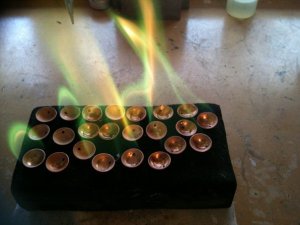Torch Comfort


Most metalsmiths hold their torches differently than I do.
Others set up their torch head so that the tip is opposite the control knob. Check out the first photo accompanying this post. Setting up the torch tip this way means that adjusting the flame requires a deft little move involving the joints of your thumb and your index finger. It takes a little getting used to, especially since you’re using your non-dominant hand (or at least you “should” be).
I like to set up the torch so that the control knob and the tip are on the same side of the torch head (see photo). This way I can adjust the control knob with the tips of my index and thumb, and it feels quite natural.
The beauty of working in your own studio is that it’s up to you. Try my way. You may find it more comfortable.
Sponsored by:

